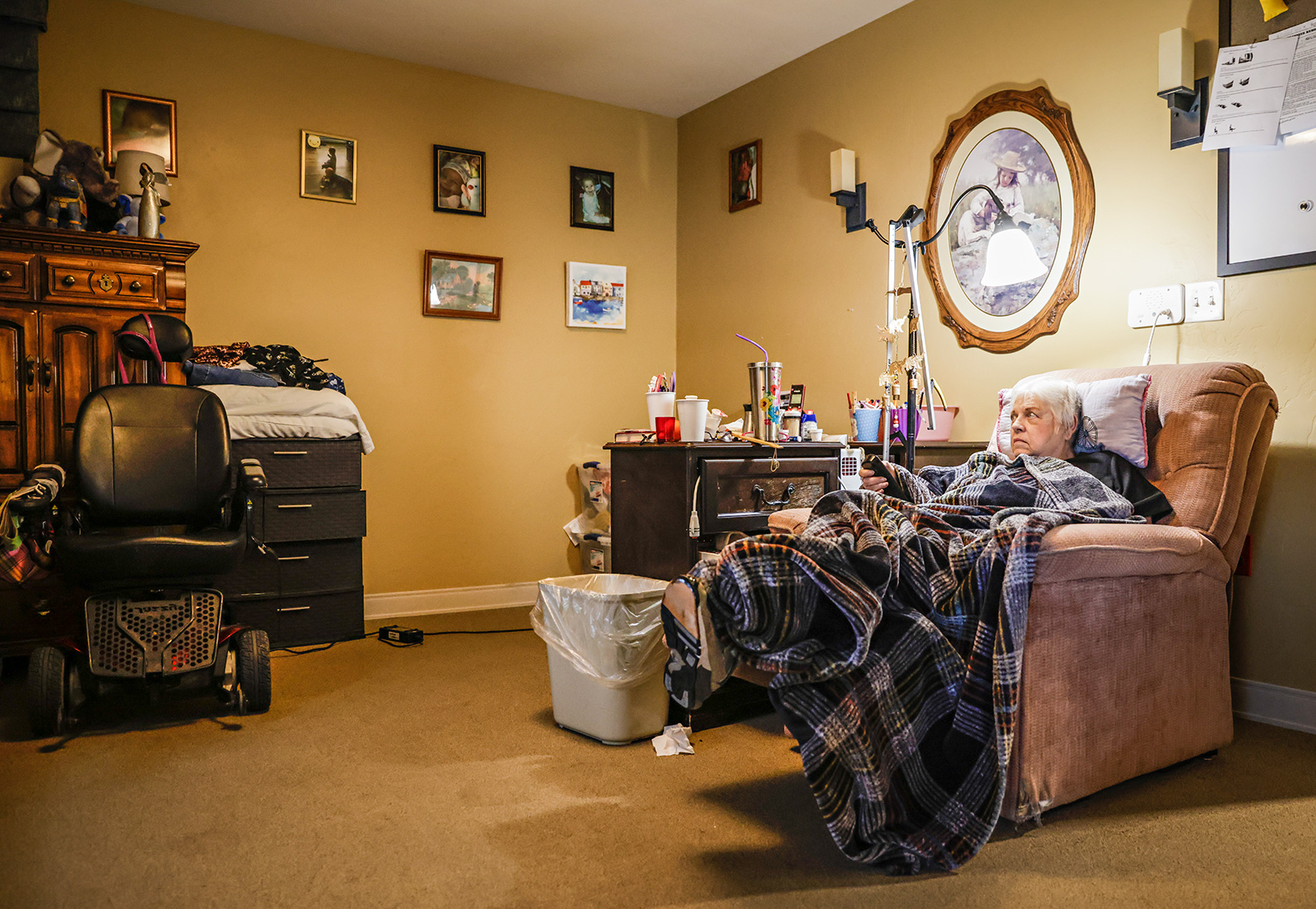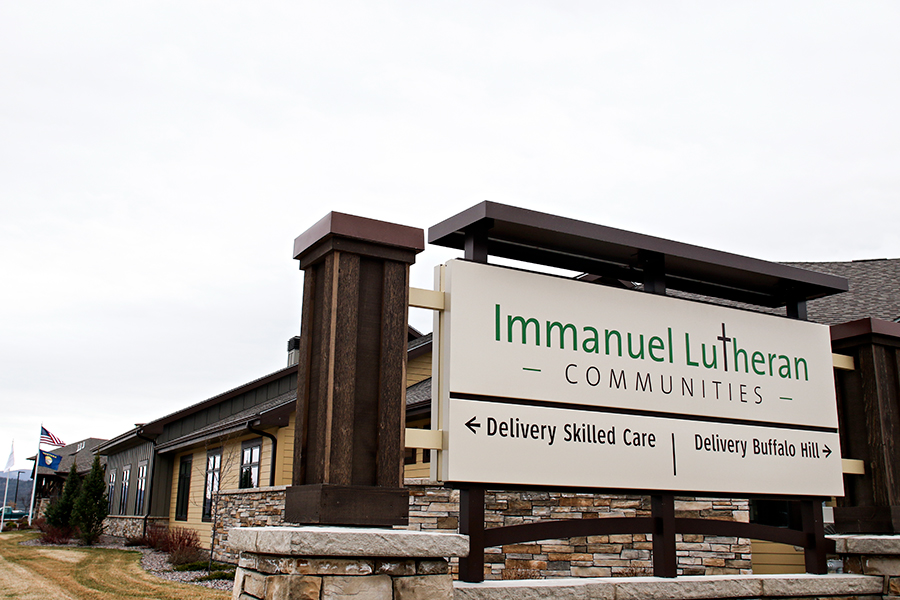Flathead Providers Promote ‘Aging in Place’ as Senior Healthcare Demand Rises
The Flathead Valley is following nationwide population trends as the youngest baby boomers near retirement age. But demand far exceeds available resources, forcing providers to brainstorm creative solutions to eldercare.
By Maggie Dresser
When Betsy Platt and her husband left California to retire in Bigfork two decades ago, they immersed themselves into the community – joining the First Presbyterian Church of Kalispell and volunteering for organizations like the local food bank.
“We have loved being here and consider it a blessing,” Platt said. “Being part of the community and getting to know people who have been here a lot longer – it’s been a wonderful experience. I’m grateful that we have so many volunteer organizations as we do, and we have a strong ethic in serving other people.”
Platt remembers helping with a study at her church several years ago that identified programs and services in the Flathead Valley that were available to seniors. She realized that the baby boomer generation not far behind her was starting to age quickly and it prompted her to think about her own future.
Now in her 80s, Platt has put a deposit down to secure her spot on the waitlist for an independent living apartment unit at Immanuel Living, formerly Immanuel Lutheran Communities, in Kalispell as a way to plan for a future in which she needs more support.
While Platt remains active in her community, she has lived alone ever since her husband died last year and her nieces and nephews – her closest relatives – live on the East Coast.
With no immediate family living nearby and an awareness of the limited resources in the Flathead Valley, Platt chose to look ahead.
“I just see this as an issue not only for the Flathead Valley, but for the whole country,” Platt said. “You’re going to a hit a wall sooner or later in your 70s or 80s and you’re going to need to plan for this.”
According to 2020 Census data, the national demographic of people ages 65 and over grew nearly five times faster than the total population over the 100-year period stretching from 1920 to 2020, and this population segment has recently reached 55.8 million.
Driven by aging baby boomers, this generation of Americans began turning 65 in 2011, while the youngest individuals will be 65 years old by 2030.
But Montana’s senior citizen population is more sizable than many other U.S. states, ranking No. 6 overall, with 19.7% of its population considered geriatric, according to 2020 Census data. Maine ranks No. 1 with 21.8% while Utah ranks No. 50 with 11.7%.
Meanwhile, Flathead County’s population of individuals 65 and over is at 21% as of last year, while people over the age of 60 account for 28% of the population.
“We’re talking almost one out of every three people is over 60,” Flathead County Agency on Aging Director Carla Dyment said. “What does that mean for the long-term?”
At the Agency on Aging, a county department that provides resources for older folks on low incomes, Dyment says the organization’s demand for services like meals, caregiver support and legal assistance has skyrocketed in recent years.
Since the pandemic began, Dyment said demand for both social dining and the Meals on Wheels programs have increased by close to 40%.
In addition to nutrition and socialization services, the agency also offers respite care and contracts with homecare providers who work directly with elderly people to help with things like light housekeeping or groceries. It also helps family caregivers who need a break.
“We’re just one piece of the puzzle,” Dyment said. “We’re one piece of a team when it comes to our community responding to the aging needs of our population … in terms of the need and demand, it’s just exponentially increasing, and we are already maxed.”
But as demand rises, Dyment said funding has remained stagnant. Using primarily state and federal funding, with a small chunk of county budget allocations and donations, officials say it’s not enough to keep up as waitlists grow longer.
Susan Kunda, an ombudsman for the agency who advocates for seniors, visits 22 facilities in the county, five of which are nursing homes, and says nearly every one of them is full and has adopted a waitlist.

At Immanuel Living, CEO Jason Cronk oversees 300 residents located next to Logan Health with levels of care that include independent living, assisted living, memory support, acute and long-term care. About 60% of residents are on Medicaid while the remaining 40% use private pay, which helps offset the costs.
Cronk says each facility has a waitlist, with some that have grown to 90 people, and he has plans to add 40 more independent living units as the demand grows.
“The reality is, we can’t build fast enough for the aging demographic in Montana and the Flathead,” Cronk said.
In the facilities that require more medical resources like the nursing home and memory care, it’s capped at 123 residents.
In recent years, Cronk said the nonprofit has struggled to recruit and retain employees because of a healthcare worker shortage and a low Medicaid reimbursement rate that makes it difficult to keep up with costs.
In 2022, 10 nursing homes closed in Montana due to staffing shortages, prompting the transfer of 289 elderly and disabled residents, according to state officials.
In the pandemic’s aftermath, Immanuel suffered a workforce shortage, too, and didn’t have the labor to care for the facility’s capacity, which left open beds. Until recently, the state reimbursement rate was only $212, but that rate increased to $278 on July 1 following the new measures by the 2023 Legislature. But the new rate still doesn’t cover the cost of care, which averages about $350 per day.
To attract workers, Immanuel used American Rescue Plan Act (ARPA) funds to launch a childcare program called the Growing Roots Early Learning Center, which Cronk said has helped with the labor force. They now employ a full staff that has returned to pre-pandemic levels.
But the services at Immanuel’s facilities isn’t enough to support the valley, and Cronk said they are shifting their focus to provide in-home assistance and recently launched the Immanuel Living At Home program.
“We can’t meet the aging demographic fast enough and Immanuel Living At Home will help meet those folks where they want to retire,” Cronk said. “A lot of folks want to stay in their home.”
With the program, certified nurse assistants and aides visit seniors at their home and use technology that allows professionals to monitor health markers like weight and vitals remotely while also facilitating social outings.
The “aging-in-place” model has become a new focus for organizations as the demand for senior living outpaces the available resources and industry leaders are forced to re-think elderly care.
At the Agency on Aging, Dyment says aging in place is the future of elderly care and they hope to continue expanding their at-home care as funding allows.
Last year, the agency launched a Home Modification Program that facilitates minor modifications in people’s houses like installing ramps, replacing door handles or adding a bathroom bar.
“You have a lot of people who live here who are aging that might be alone in their home, but they have a space. So how does that space continue to support them at home? The more we can do as a community to foster that, the better because now you’re investing in more of a safety net,” Dyment said.
According to a 2021 AARP survey, more than 75% of adults over age 50 want to stay in their homes as they age, and while it’s preferred to the general population, experts say it’s also necessary amid a lack of resources.
By 2035, the National Center for Health Workforce Analysis projects there will be a shortage of 63,720 registered nurses, at which point all baby boomers will be at least age 70.
“We have a perfect storm with a growing aging population and a lack of staff for a lot of facilities and the elderly need a different option,” said Jane Emmert, the director of ASSIST, a Logan Health nonprofit partner that helps connect people with resources.
At ASSIST, Emmert has organized an elder crisis management group that brainstorms solutions for problems like elder abuse, identifying early signs of dementia and helping seniors and their families prepare for the end of life with things like power of attorney and financial planning.
Emmert says it’s also important to bring awareness to the growth of individuals who suffer from dementia and the toll it takes on families.
In 2020, there were 22,000 geriatrics in Montana with Alzheimer’s disease, with that number expected to increase to 27,000 by 2025. Two years ago, there were 17,000 unpaid caregivers in the state, according to Alzheimer’s Association data.
“What we’re seeing in the growing dementia population is families are desperately trying to keep their loved one at home, but the caregiver is burned out and behaviors can get violent,” Emmert said. “What do we do with these folks? Sometimes the families get so exhausted they drop them off at the ER and drive away.”
Kunda, the ombudsman at the Agency on Aging, says she regularly works with stubborn clients suffering from dementia and other serious health conditions who need high levels of care.
As a client advocate, Kunda takes on an average of 90 calls per month and often works with adult protective services (APS) personnel, who call her to help the most vulnerable individuals who are sometimes difficult to place into care. She remembers years ago when she finally convinced a homeless woman in her 50s to go into a nursing home because she had such severe arthritis she could barely function.
“She did not want to accept her physical condition,” Kunda said.
Kunda also deals with some clients during the late stages of dementia, when personalities transform and sometimes turn violent.
“That becomes a huge problem because now you’re putting a great big burly guy with Alzheimer’s who’s not nice – he may have been the sweetest person before and then dementia just turned them around. So how do we place this person where they will not hurt other residents? It’s a constant problem,” Kunda said.

Since the demand for geriatric healthcare and placement is expected to continue growing drastically, providers stress the importance of planning ahead before an individual’s needs become desperate.
But Dyment says most people do not plan for their long-term care and they don’t get their final affairs in order before they die. She says there’s a level of denial that is sometimes associated with aging.
“It’s a pride thing – it’s a fear thing,” Dyment said. “But we are all headed in the same direction. If we as a community get better about having those conversations, then we can invest in what that needs to look like at younger ages and feel like we’re headed toward something positive instead of something scary.”
The Agency on Aging highlights the importance of educating families about things like getting on waitlists for future care and financial planning, and they work to help them through the process.
“We are looking to do more about the prevention of burnout,” Dyment said. “We have family caregivers that come to us that are so maxed out that their own health has declined maybe even worse than the person they’ve been caring for.”
Educators with the Montana State University Extension program offer an aging workshop that includes topics like legacy planning, wills, power of attorney and advanced directives.
At My Glacier Village, a nonprofit that connects seniors to resources while also hosting events that foster socialization, Director Jenn Prunty says conversations constantly revolve around planning, finances and connectivity.
“I think it all comes down to planning,” Prunty said. “Just imagine you might live to be 100 – what will that look like for your finances and your health?”
Prunty also focuses on the social aspect of aging and works to connect older folks who otherwise might live out their days in isolation.
According to the Center for Disease Control and Prevention (CDC), more than 25% of adults over age 65 are considered socially isolated, which is associated with about a 50% increased risk of dementia and other serious medical conditions.
But despite the desperate need for resources, providers around the Flathead are working to reframe aging in a positive light by connecting seniors with each other and promoting the aging-in-place model.
“We want our independence, we want a sense of purpose, and we want to be connected,” Dyment said. “We want those things until the day we die.”